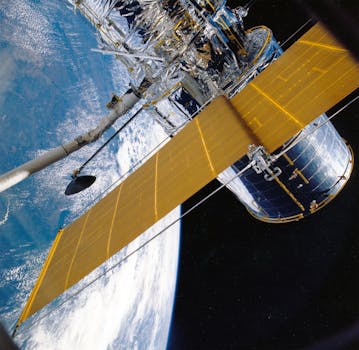
Satellite Telecommunications 2023: What’s New and What’s Next? – Satellite Telecommunications
Satellite Telecommunications 2023 is expected to be a year of innovation and growth, with new technologies and services emerging to meet the increasing demand for global connectivity. The satellite telecommunications industry has experienced significant advancements in recent years, driven by advances in technology, decreasing costs, and increasing demand for satellite-based services. In this article, we will explore the latest developments and trends in satellite telecommunications, and what we can expect in the future.
Advances in Satellite Technology
One of the key drivers of innovation in the satellite telecommunications industry is the development of new satellite technologies. Recent advancements in satellite design, materials, and propulsion systems have enabled the creation of smaller, more efficient, and more powerful satellites. These new satellites are capable of providing higher-speed data connections, increased bandwidth, and improved coverage, making them ideal for a wide range of applications, including broadband internet, mobile communications, and Earth observation.
Another significant development in satellite technology is the emergence of satellite constellations. These constellations, which consist of hundreds or even thousands of small satellites, are designed to provide global coverage and high-speed data connections. Companies such as SpaceX, OneWeb, and Amazon are investing heavily in the development of satellite constellations, which are expected to revolutionize the way we communicate and access information.
New Services and Applications
The increasing capabilities of satellite technology are also enabling the development of new services and applications. One of the most significant trends in satellite telecommunications is the growth of satellite-based broadband internet services. These services, which use satellites to provide high-speed internet connections, are ideal for remote or underserved communities where traditional fiber-based connectivity is not available.
Another area of growth is in the use of satellites for mobile communications. Satellites are being used to provide cellular backhaul services, enabling mobile operators to extend their networks to remote areas and provide connectivity to underserved communities. Satellites are also being used to provide machine-to-machine (M2M) communications, enabling the connection of devices such as sensors, trackers, and other IoT devices.
Challenges and Opportunities
Despite the many advances and opportunities in satellite telecommunications, there are also challenges to be addressed. One of the significant challenges facing the industry is the issue of spectrum allocation. The increasing demand for satellite-based services is putting pressure on the available spectrum, and there is a need for more efficient use of spectrum resources.
Another challenge is the issue of space debris. The increasing number of satellites in orbit is creating a growing problem of space debris, which can pose a risk to operational satellites and other space-based assets. The industry is working to develop solutions to this problem, including the use of de-orbiting technologies and more sustainable satellite design.
Conclusion
In conclusion, Satellite Telecommunications 2023 is expected to be a year of significant innovation and growth, driven by advances in technology, decreasing costs, and increasing demand for satellite-based services. As the industry continues to evolve, we can expect to see new services and applications emerge, including satellite-based broadband internet, mobile communications, and M2M communications. However, the industry must also address the challenges of spectrum allocation and space debris, in order to ensure the long-term sustainability of satellite telecommunications.



